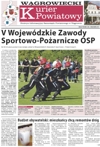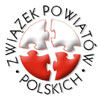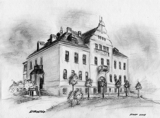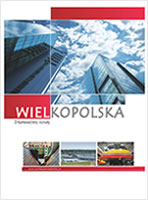Wągrowiecki Kurier Powiatowy
Powiat wągrowiecki - powiat lüneburski: 10 lat współpracy partnerskiej
Walory Przyrodnicze Powiatu Wągrowieckiego
Welcome to the Administrative District of Wągrowiec!
The Administrative District of Wągrowiec
The Administrative District of Wągrowiec is one of 35 Administrative Districts in Wielkopolska, situated in the north-eastern part of the region. It covers an area of 1040.8 km2, on which over 70 thousand inhabitants live. As far as the size is concerned, the territory of this District is in 10th place in Wielkopolska. There are 7 administrative-municipal units functioning in this district: Wągrowiec municipal commune, municipalrural communes: Gołańcz and Skoki, and rural communes: Damasławek, Mieścisko, Wapno, and Wągrowiec.
Short historic outline and monuments
While in the Wągrowiec District, one should see numerous monuments and familiarize oneself with their history.
The Wągrowiec District lies between the Piastowski and the Cistercian routes. The Cistercian route runs across Wągrowiec, Tarnowo Pałuckie, and Łekno. The beginnings of Wągrowiec are connected with the expansion of the Cistercians brought to Łekno from Altenberg in about 1142. In the year 1319 an abbot named Gotszalk bought from Sędziwój of Zaremby land in the overflow-arms of the Warta and the Nielba. Cistercian buildings started appearing in the surrounding areas. There were already a mill, a dam, and a church in the expanding Wągrowiec settlement in 1381. The first records of Wągrowiec as a town are from that time as well.
More significant historic buildings:
- The St. Jacob's parish church in Wągrowiec was recorded as early as 1381. The construction, now situated in this location, started at the beginning of the 16th century. It is an example of the late-Gothic structure made of Polish style bricks with the early-Renaissance spires,
- a church and a posCistercian cloister in Wągrowiec. The original building was probably erected between 1383 and 1396. However, the whole church and cloister were destroyed in a fire in 1747, and they were rebuilt in the second half of the 18th century. At first the cloister was reconstructed, followed by the church. The buildings were again consumed by a fire in 1945, but reconstruction started as early as 1946 and lasted until 1962. The Parish Church of St. Mary and St. Peters and Paul as well as the cloister itself are late-Baroque constructions. The church is made of bricks and plaster, having been raised in the shape of a rectangle,
- "Opatówka"-former seat of the Cistercian abbots now the Wągrowiec Regional Museum,
- a six-meter high-tomb of Franciszek Łakiński (1767-1845)-a captain of horse in the Napoleonic army; in the shape of a pyramid-situated in Łaziska,
- St. Nicolas' church in Tarnowo Pałuckie-an inquiry proved that it had been raised in the last quarter of the 14th century. The tower and roof rafter framing was built in 1639. A church erected on a hill near the Rgielskie lake. It is a wooden building of stromal construction and unusually richly ornamented,
- archeological excavations in Tarnowo Pałuckie, the foundations of a Cistercian cloister from the 12th century,
- a wooden church in Potulice built in 1728 founded by Aleksander Samuel Biegański-a judge from Kcynia,
- a Dutch windmill in Bracholino from the second half of the 19th century, built of bricks on a high stone underpinning. It is characterized by a wooden semispherical head covered with tar paper,
- St. Stanisław Kostka's church in Damasławek built in 1923, with the main rococo altar as well as balustrade fragments being of the same style,
- the palace and park complex in Kobyłki, built in 1882,
- a Gothic castle of the Pałuki Gołanieccy from the first half of the 14th century in Gołańcz,
- a post-Bernardine church of St. Mary in Gołańcz, built probably in 15th/16th century. Thanks to the efforts of Marcin Smogulecki, it was to be rebuilt at first in 1695, yet eventually it was extended,
- a wooden church of Annunciation of St. Mary in Popowo Kościelne, rebuilt in 1730,
- a palace from the second half of the 19th century in Żabiczyn,
- a wooden church of St. Ann from 1712 in Podlesie Kościelne, displayed by Jan Rydzyński-an esquire carver from Poznań,
- St. Michael's church from 1875-1876 together with a presbytery from about 1880 and a chapel from 1845 in Mieścisko,
- the eclectic mansion from about 1870 in Skoki, now a plain-air and holiday house of the Academy of Fine Arts in Poznań,
- post-evangelical church of St. Paul and Peter from 1855-56 in Skoki,
- a wooden church of the holy Archangel in Jabłkowo,
- a wooden church of All Saints from 1780-82 in Raczków,
- a court complex in the classicistic style from 1799 in Srebrna Góra, now transformed into the Social Aid House and a scenic park.
Culture
In the Administative District of Wągrowiec many local and regional, but also nationwide cultural events take place. There are many amateur theatres, choirs, youth brass band, folk artists, and numerous musical other bands. The regional museum plays an important role in the cultural life of Wągrowiec, which, in addition to temporary, has permanent exhibitions on the history of the town and an ethnographic exhibition "the Fisherman's cottage".
The events that take place regularly are:
- an archeological festival "In the Zbylutowo castle", organized at the Łekneński Lake (July),
- "The summer in Pałuki" - it is a series of recreational and sports events-taking place in the summer period (July and August),
- "the Days of Wągrowiec", during which "the Cistercian picnic" is held ( July ),
- the sailing boats regatta "The Lake Durowski Blue Band Cup"-Wągrowiec (June),
- Rockmeeting-rock concerts in Damasławek (July),
- the St. John's night near the castle in Golańcz - the historical outdoor spectacle (June),
- "The Hot Poetry" - a nationwide event concerning accomplishments in the field of so called poetic song in Golańcz (November),
- Nationwide Artistic Mainstray "The Tower" - an artistic review combined with a musical competition and a concert of stars - the castle in Golańcz (August),
- the Days of Skoki - series of cultural-recreational events (June),
- "Farewell to Summer" - a recreational picnic in Skoki (August),
- "Michałkowski fair" - a cultural and commercial event in Mieścisko (September),
- "The Golden Maple" - a reciter's competition in Łekno (October).
Natural and tourist attractions
A great advantage of the district of Wągrowiec is a friendly natural environment, its natural beauty and picturesque of scenery. There are 54 lakes in the area, which makes it a wonderful place for recreation and water sports such as yachting, canoeing, motor boating and jet skiing, as well as windsurfing. To the joy of anglers, the local lakes swarm with eel, roaches, pikes, tenches, and breams. The majority of the tunnelvalley lakes of the district are situated in beautiful scenery surrounded by forests, which make foot paths and well marked bicycle tracks very popular with the locals and tourists alike. Forests cover the area of 19.622 ha, which constitutes 18,89% of the whole area of the district. The district of Wągrowiec is an area of low pollution. There are several interesting sanctuaries there. One of them is a forest sanctuary "The Oakwood" situated only a few kilometers from Wągrowiec. It is about a 40-hectare forest complex with 300 year-old oaks. The most sumptuous one, namely the Wojciech Korfanty's Oak, was recognized as a natural monument. Apart from oaks, lime trees, elms, maples, beeches, and sycamores grow there, and in the undergrowth there are many protected species, such as: Melica uniflora, Corydalis cava, orchis, Neottia nidus-avis. There are also nests of different types of birds; grey heron and peregrine among others.
There is a fauna reservation in the premises of the Bracholińskie lakes. There are 139 kinds of birds, including 68 breeding species such as the rare kaczka wełnista, greylag goose, several kinds of grebe, and the short-eared owl.
There are four rivers running through the district of Wągrowiec: Wełna, Nielba, Struga Gołaniecka, and Mała Wełna. Two of them, namely Nielba and Wełna, intersect creating a unique hydrographical occurrence called bifurcation unique in all of Europe.
Foreign cooperation
The District of Wągrowiec and its individual communes signed a partnership contract with the district of Lüneburg of Lower Saxony in Germany. The districts share their experience in the field of self-government and cooperate in the area of culture, sports, tourism, and socially.
Starostwo Powiatowe
ul. Kościuszki 15
62-100 Wągrowiec
tel. 67 2680500
fax 67 2627888
godz. otwarcia:
pon. 08:00-16:00
wt.-pt. 07:30-15:30
powiat@wagrowiec.pl
www.wagrowiec.pl
Wydział Komunikacji:
ul. Kościuszki 53D
tel. 67 2621112
tel. 67 2627322
tel. 506363772
tel. 506450286
Sekretariat Starosty:
67 2620168
ZAŁATWIANIE SPRAW W STAROSTWIE
[więcej ...]
Elektroniczna Skrzynka Podawcza Starostwa Powiatowego
w Wągrowcu
EPUAP: hul36u9k7f
Zgłoś uwagę
[więcej ...]
Konsultacje aktów prawa miejscowego
[więcej...]
Biuro Rzeczy Znalezionych
[więcej ...]
APTEKI
[więcej ...]
INFORMATOR MEDYCZNY 2015
[więcej ...]
Powiatowy Katalog Firm
[więcej ...]
Laureaci Nagrody Herbu Powiatu Wągrowieckiego
[więcej ...]
Zamówienia publiczne
[więcej ...]
Nabór pracowników
[więcej ...]
Ośrodek Interwencji Kryzysowej w Powiecie Wągrowieckim
[więcej ...]
pomoc wNet!
[więcej...]
Numer 112
[więcej ...]
Karty wędkarskie
[więcej ...]
Zostań rodzicem lub rodziną zastępczą
[więcej ...]
Strażacka Izba Pamięci w Wągrowcu
[więcej ...]
Zadzwoń do dzielnicowego
[więcej ...]































